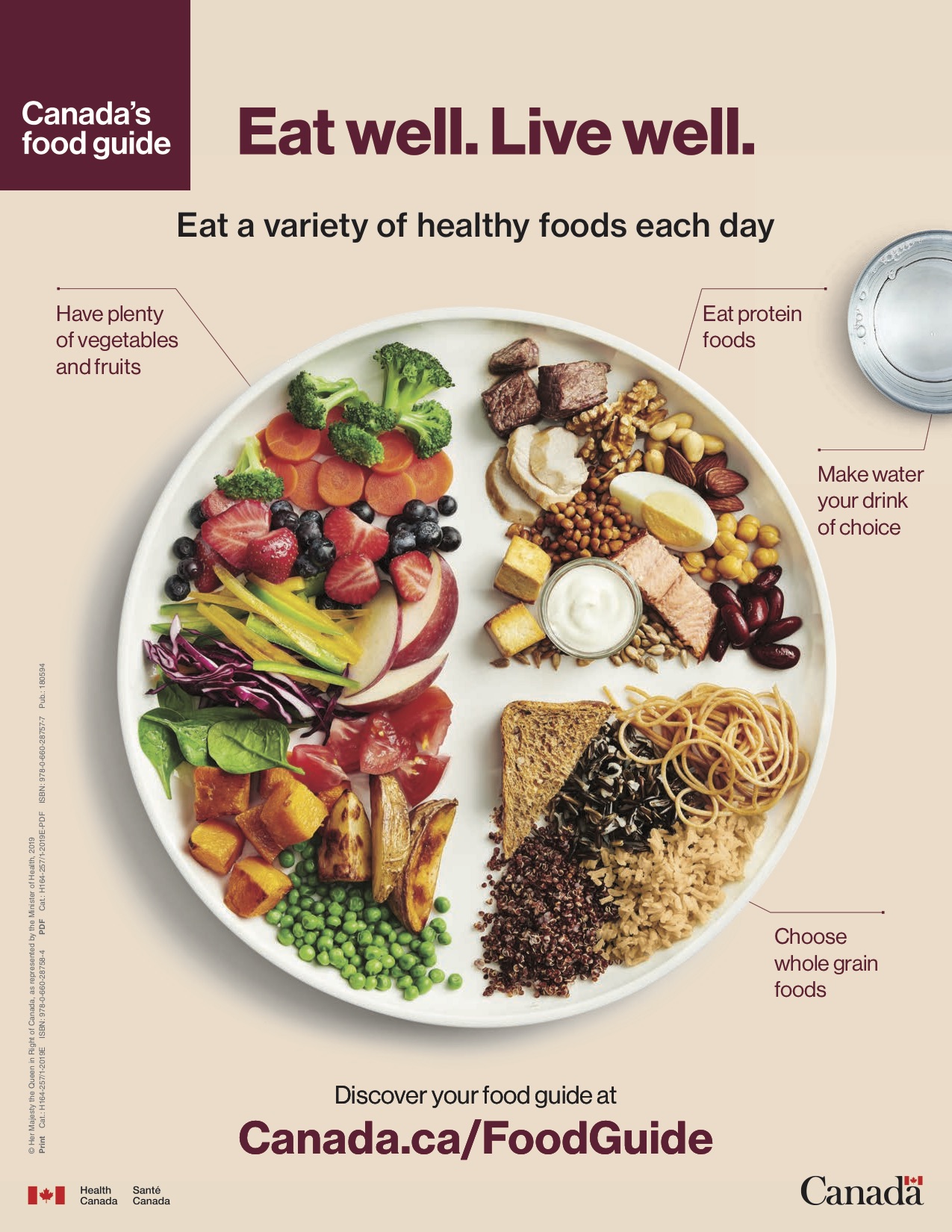The New Canada’s Food Guide: Encouraging Healthy Eating
/The new Canada Food Guide was released on January 22, 2019, and before its publication there was a lot of speculation surrounding what foods would be eliminated and what foods that were previously highlighted would be minimized. In truth, the new Canada’s food guide encourages healthy food choices. They want Canadians to, "make it a habit of eating a variety of healthy food each day."
What does this mean? It means eating plenty of fruits and vegetables, whole grain foods and protein foods – including protein that come from plants. It also means limiting highly processed foods (note: they do not say to avoid them altogether, but to eat them less often and in small amounts).
The picture on the new Canada’s food guide shows a plate half-filled with vegetables and fruits, with the other half split between protein foods and whole grain foods. Gone are the graphics for milk, yogurts and meats. Instead, meat protein shares its space with protein from nuts, tofu and legumes.
My favourite addition is to, “make water your drink of choice.” There is no substitute for the healthiness and necessity of water. We are mostly made from water, so it’s no wonder we should be focusing our beverage choices on water as opposed to sugary and artificially-flavoured drinks.
The new Canada’s food guide also focuses on healthy eating habits. It encourages you to use food labels, and to limit foods high in sodium, sugars and saturated fats.
In a fast-paced world, the new food guide encourages us to take our time to eat, plan what we eat and involve others in planning and preparing meals. This is especially important for families.
As a registered dietician, and mother of three young children, Cathy Richards believes eating healthy as a family does not have to be time-consuming or difficult, and she’s happy to see that the new food guide recommendations support the scientific evidence on diet and health.
“The focus is on whole foods and it’s presented in an easy to understand format. A visual of the plate makes it easy for my clients to understand how they should be aiming to balance a meal. I really like the interactive nature of the website for the guide, as it makes it a fun activity for families to explore together by trying new recipes or incorporating the tips around mindful eating.”
Food marketing to kids is also a very relevant concern and Cathy is, “happy to see some direction for parents around this. The research supports cooking at home more often and eating together as key health behaviours to prevent obesity in adulthood. To be honest, I haven’t been referring to Canada’s food guide with my clients for years but with this new addition I’ll definitely be directing more of my clients there to explore the website and learn with their families.”
Canada’s food guide website has many healthy recipes the entire family can enjoy preparing and eating together. The guide also has tips on how to eat healthy anywhere as well as outlines nutritional needs based on age and life stages.
Canada's food guide has changed, but it has changed because with the many food options available to us in grocery stores, online and in restaurants, it can be confusing to know what eating healthy really means. After all, “healthy eating is more than the foods you eat.”
For more information on the new Canada’s food guide, visit their website. You can even download an educational poster and post it on your fridge as a reminder of what it means to eat healthy.















